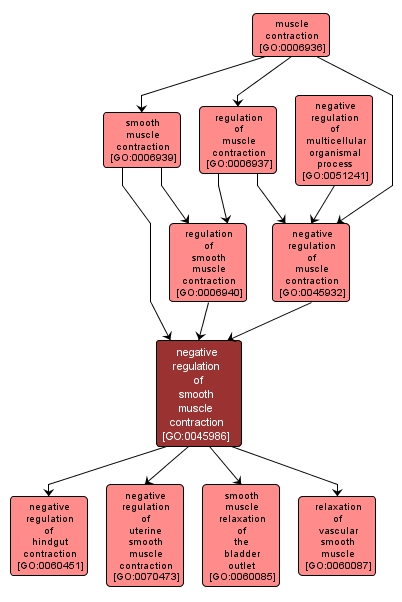GO TERM SUMMARY
|
| Name: |
negative regulation of smooth muscle contraction |
| Acc: |
GO:0045986 |
| Aspect: |
Biological Process |
| Desc: |
Any process that stops, prevents or reduces the frequency, rate or extent of smooth muscle contraction. |
Synonyms:
- smooth muscle relaxation
- inhibition of smooth muscle contraction
- down regulation of smooth muscle contraction
- down-regulation of smooth muscle contraction
- downregulation of smooth muscle contraction
|
|

|
INTERACTIVE GO GRAPH
|














